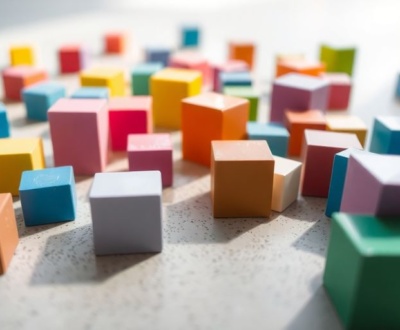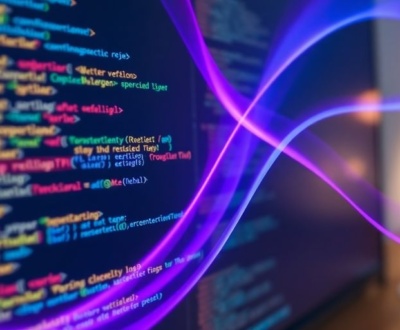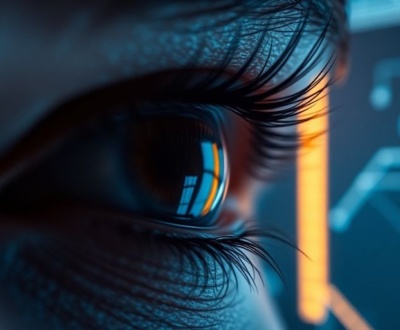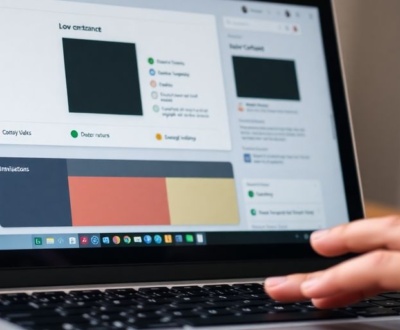The Basic Principles of Graphic Design: A Foundation for Creative Success
- October 29, 2024
- Blog
Graphic design is more than just making things look pretty; it’s about following some basic rules to create effective designs. These principles help guide designers in making choices that lead to successful projects. Understanding these key concepts can make a big difference in how your designs are received and understood. Let’s break down the essential principles that every graphic designer should know.
Key Takeaways
- Balance helps in creating a stable and pleasing design by evenly distributing elements.
- Contrast makes important parts of a design stand out and improves readability.
- Alignment ensures that elements are organized and connected, making the layout cohesive.
- Proximity groups related items together, helping viewers understand their relationships.
- Repetition creates consistency and strengthens brand identity across different designs.
Understanding Balance in Graphic Design
Balance is a key part of graphic design that helps make everything look just right. It’s all about how elements are arranged so that they feel stable and pleasing to the eye. Here’s a quick breakdown of the different types of balance:
Symmetrical Balance
- This type of balance is like a mirror. If you draw a line down the middle, both sides look the same.
- It gives a sense of calm and order.
- Common in logos and formal designs.
Asymmetrical Balance
- Here, the sides are different but still feel balanced. It uses size, color, and shape to create harmony.
- This type is often more dynamic and interesting.
- Great for modern designs where you want to grab attention.
Radial Balance
- In radial balance, elements are arranged around a central point, like the petals of a flower.
- This creates a sense of movement and energy.
- Perfect for designs that want to draw the viewer’s eye inward.
Balance helps structure the content in such a way that the viewer can easily navigate and understand what it’s about.
Understanding these types of balance can really help you create designs that are not only beautiful but also effective. So, whether you’re going for a calm symmetrical look or a lively asymmetrical vibe, balance is your best friend in graphic design!
The Role of Contrast in Effective Design
Contrast is a key player in making your designs pop. It’s all about how different elements stand out from each other. When you use contrast well, you can guide the viewer’s eye and make your message clearer. Here’s a breakdown of how contrast works in design:
Color Contrast
- Light vs Dark: Using light text on a dark background (or vice versa) can make your content easier to read.
- Complementary Colors: Pairing colors that are opposite on the color wheel can create a vibrant look.
- Monochromatic Schemes: Different shades of the same color can also provide contrast without being too jarring.
Size and Shape Contrast
- Big vs Small: Larger elements naturally draw more attention. Use this to highlight important information.
- Geometric vs Organic Shapes: Mixing shapes can create visual interest and help certain elements stand out.
- Thick vs Thin Lines: Varying line weights can add depth and focus to your design.
Texture Contrast
- Smooth vs Rough: Combining textures can create a tactile feel, making your design more engaging.
- Flat vs 3D: Using flat elements alongside 3D ones can create a dynamic look.
- Pattern vs Solid: Patterns can add excitement, while solid colors can provide balance.
Remember: Contrast is not just about making things look good; it’s also about making your design accessible. If there’s not enough contrast, it can be hard for some people to read your text, especially those with visual impairments.
In summary, using contrast effectively can elevate your designs and ensure they communicate your message clearly. So, don’t shy away from mixing things up!
Mastering Alignment for Cohesive Layouts
Alignment is like the glue that holds your design together. It helps create a clean and organized look by lining up elements in a way that makes sense. When everything is aligned, your design feels more professional and is easier to read. Here’s a closer look at how to master alignment:
Left, Center, and Right Alignment
- Left Alignment: This is the most common type. It’s easy to read and works well for most text.
- Center Alignment: Great for titles or short phrases, but can be tricky for longer text.
- Right Alignment: Less common, but can add a unique touch to your design.
Grid Systems
Using a grid system can really help in organizing your layout. Here’s why:
- Structure: Grids provide a framework that keeps everything in line.
- Efficiency: They speed up your design process by offering a clear path to follow.
- Consistency: Helps maintain a uniform look across different pages or sections.
Visual Connection
Creating a visual connection between elements is key. This means:
- Grouping related items together.
- Using spacing to guide the viewer’s eye.
- Establishing a clear visual hierarchy so that the most important information stands out.
Remember, alignment isn’t just about making things look pretty; it’s about making your design functional and easy to navigate. When you get alignment right, you create a design that not only looks good but also communicates effectively!
Utilizing Proximity to Create Relationships

When it comes to graphic design, proximity is key! This principle is all about grouping related items together to help viewers understand the connections between them. By placing similar elements close to each other, you can create a more organized and effective design. Here’s how you can make the most of proximity:
Grouping Elements
- Keep similar items together: This helps the audience see relationships easily.
- Use white space wisely: It can separate different groups and make the design less cluttered.
- Create visual clusters: This draws attention to important information.
Spacing and Layout
- Adjust spacing: Too much space can make items feel disconnected, while too little can create chaos.
- Align elements: Proper alignment can enhance the effect of proximity.
- Use grids: They help maintain consistent spacing and organization.
Visual Hierarchy
- Highlight important items: Use proximity to guide the viewer’s eye to what matters most.
- Create a flow: Arrange elements in a way that leads the viewer through the design.
- Use size and color: These can enhance the effect of proximity and make certain elements stand out.
Proximity is the idea that placing similar design elements close together produces a more effective visual design.
By mastering the principle of proximity, you can transform your designs from chaotic to cohesive, making it easier for your audience to digest the information you present!
Repetition as a Tool for Consistency
Repetition is a key part of graphic design that helps create a sense of unity. When you use the same colors, shapes, or fonts throughout your design, it makes everything feel connected. Here’s why repetition is so important:
Branding and Identity
- Consistent logos: Using the same logo across all platforms helps people recognize your brand.
- Color schemes: Sticking to a specific color palette makes your designs look professional.
- Font choices: Using the same fonts helps maintain a cohesive look.
Pattern and Rhythm
Repetition can create a rhythm in your design, making it more engaging. Think of it like music; just as a song has repeating beats, your design can have repeating elements that guide the viewer’s eye.
Reinforcing Visual Elements
- Highlighting key messages: Repeating important elements can draw attention to them.
- Creating familiarity: When viewers see the same elements, they feel more comfortable and connected to the design.
- Building trust: Consistency in design can make your brand appear more reliable.
Repetition is a foundational principle in graphic design, contributing to unity, consistency, emphasis, and memorability. Whether used in branding or layout, it helps create a strong visual identity.
By using repetition wisely, you can make your designs not only look better but also feel more organized and professional!
Exploring the Impact of Color in Design
Color is more than just a pretty face in graphic design; it’s a powerful tool that can communicate emotions and guide decisions. Here’s a closer look at how color plays a role in design:
Color Theory
Understanding color theory is essential for any designer. It helps you know how colors work together and how they can affect the viewer’s feelings. Here are some key points:
- Primary Colors: Red, blue, and yellow are the building blocks.
- Secondary Colors: Mixing primary colors gives you green, orange, and purple.
- Complementary Colors: Colors opposite each other on the wheel create contrast and can make designs pop.
Psychological Effects of Color
Colors can evoke different feelings and reactions. Here’s a quick rundown:
- Red: Excitement, passion, or danger.
- Blue: Calmness, trust, and professionalism.
- Yellow: Happiness and energy.
Color Harmony
Creating a balanced color scheme is crucial. Here are some tips:
- Use a limited color palette to avoid overwhelming the viewer.
- Stick to 2-3 main colors and use shades and tints for variety.
- Test your colors together to see how they interact.
Color isn’t just about aesthetics; it’s a tool of communication. It can convey emotion and guide decisions, making it essential in design.
Understanding how to use color effectively can elevate your designs and make them more engaging. So, don’t underestimate the power of color!
Typography: The Art of Arranging Text

Font Selection
Choosing the right font is super important! Here are some tips:
- Pick a font that matches your message. For example, a fun font for a kids’ event and a serious one for a business report.
- Limit your choices. Stick to 2-3 fonts to keep things looking clean.
- Consider readability. Make sure your text is easy to read, especially for longer pieces.
Text Alignment
Alignment is all about how you line up your text. Here’s what to remember:
- Left alignment is the most common and easiest to read.
- Center alignment can be great for titles or short text but can be harder to read in long paragraphs.
- Right alignment is less common but can add a unique touch to your design.
Readability and Legibility
Readability is how easy it is to read a whole piece of text, while legibility is about how easy it is to recognize individual letters. Here are some key points:
- Use larger font sizes for headings and smaller for body text.
- Keep line spacing comfortable; too tight can make it hard to read.
- Avoid overly decorative fonts for body text; they can be hard to read.
Typography is not just about choosing pretty fonts; it’s about making sure your message is clear and easy to understand.
In graphic design, typography plays a huge role in how your message is received. By mastering these elements, you can create designs that are not only beautiful but also effective!
Conclusion
In summary, mastering the basic principles of graphic design is essential for anyone looking to succeed in this creative field. By understanding concepts like balance, contrast, and alignment, you can create designs that are not only visually appealing but also effective in communicating your message. Remember, good design isn’t just about making things look pretty; it’s about making sure your ideas are clear and engaging. As you continue to learn and practice these principles, you’ll find that your designs will improve, leading to more successful projects and happier clients.
Frequently Asked Questions
What is balance in graphic design?
Balance in graphic design means arranging elements so that they feel even. You can have symmetrical balance, where things are mirrored, or asymmetrical balance, where different elements create a sense of stability.
How does contrast help in design?
Contrast is used to show differences between elements, like colors or sizes. It helps important parts stand out and makes the design easier to read.
What is alignment and why is it important?
Alignment is about lining up elements in your design. Good alignment helps create a tidy look and makes it easier for viewers to follow the layout.
How does proximity affect design?
Proximity refers to how close or far apart elements are. Grouping related items together helps viewers understand their connection.
Why is repetition useful in design?
Repetition creates consistency. Using the same colors or fonts helps people recognize a brand and makes designs feel more organized.
What role does color play in graphic design?
Color can grab attention and affect feelings. Understanding color theory helps you choose colors that work well together and convey the right message.
About this blog
We are a digital marketing company with a focus on helping our customers achieve great results across several key areas.
Request a free quote
We offer professional SEO services that help websites increase their organic search score drastically in order to compete for the highest rankings even when it comes to highly competitive keywords.









